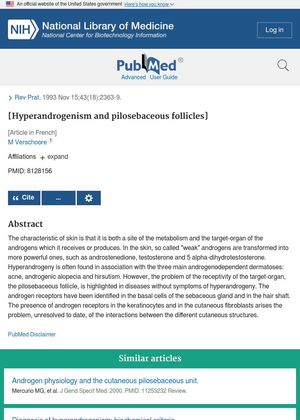Hyperandrogenism and Pilosebaceous Follicles
November 1993
in “
PubMed
”
hyperandrogenism pilosebaceous follicles androgens skin metabolism dermatoses acne androgenic alopecia hirsutism androstenedione testosterone 5 alpha-dihydrotestosterone androgen receptors sebaceous gland hair shaft keratinocytes cutaneous fibroblasts DHT androgenic alopecia hair loss skin conditions acne hirsutism

TLDR High levels of androgens can cause skin issues like acne, hair loss, and excessive hair growth.
The 1993 study "[Hyperandrogenism and pilosebaceous follicles]" discussed the role of androgens in skin metabolism and their impact on dermatoses such as acne, androgenic alopecia, and hirsutism. The skin both metabolizes and is a target of androgens, transforming "weak" androgens into more potent ones like androstenedione, testosterone, and 5 alpha-dihydrotestosterone. Hyperandrogeny was often associated with the aforementioned dermatoses. However, the study also highlighted the issue of the receptivity of the target organ, the pilosebaceous follicle, in diseases without hyperandrogeny symptoms. Androgen receptors were identified in the basal cells of the sebaceous gland and in the hair shaft, with their presence in keratinocytes and cutaneous fibroblasts raising unresolved questions about interactions between different skin structures.
